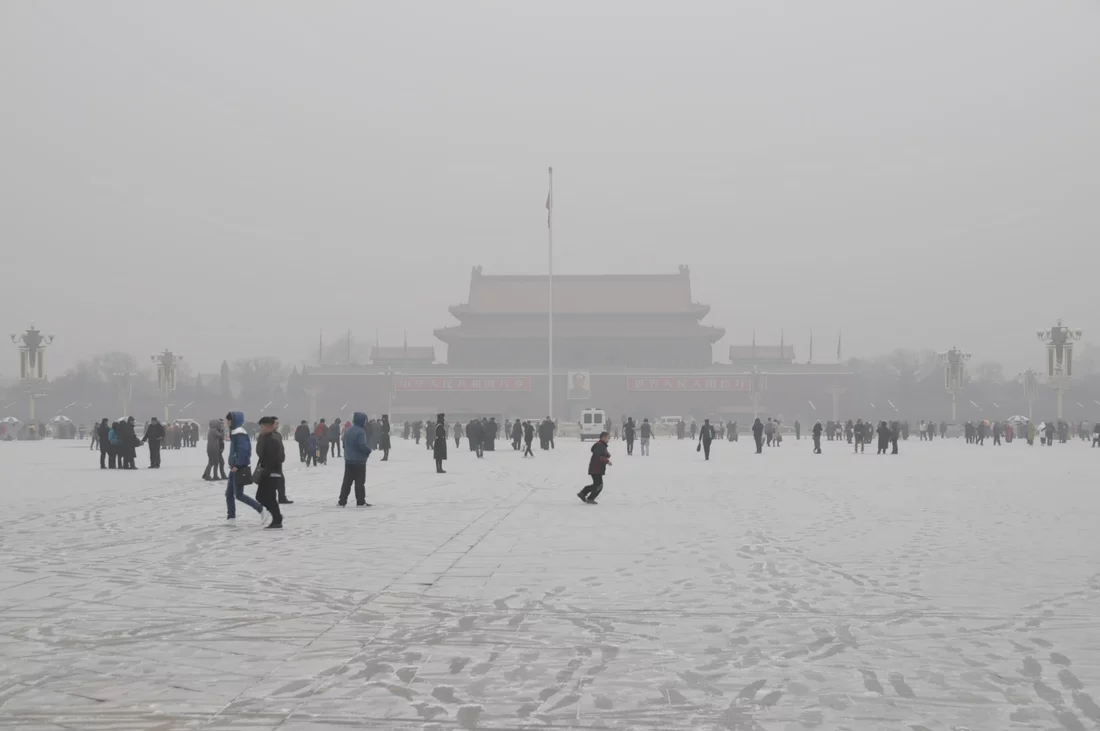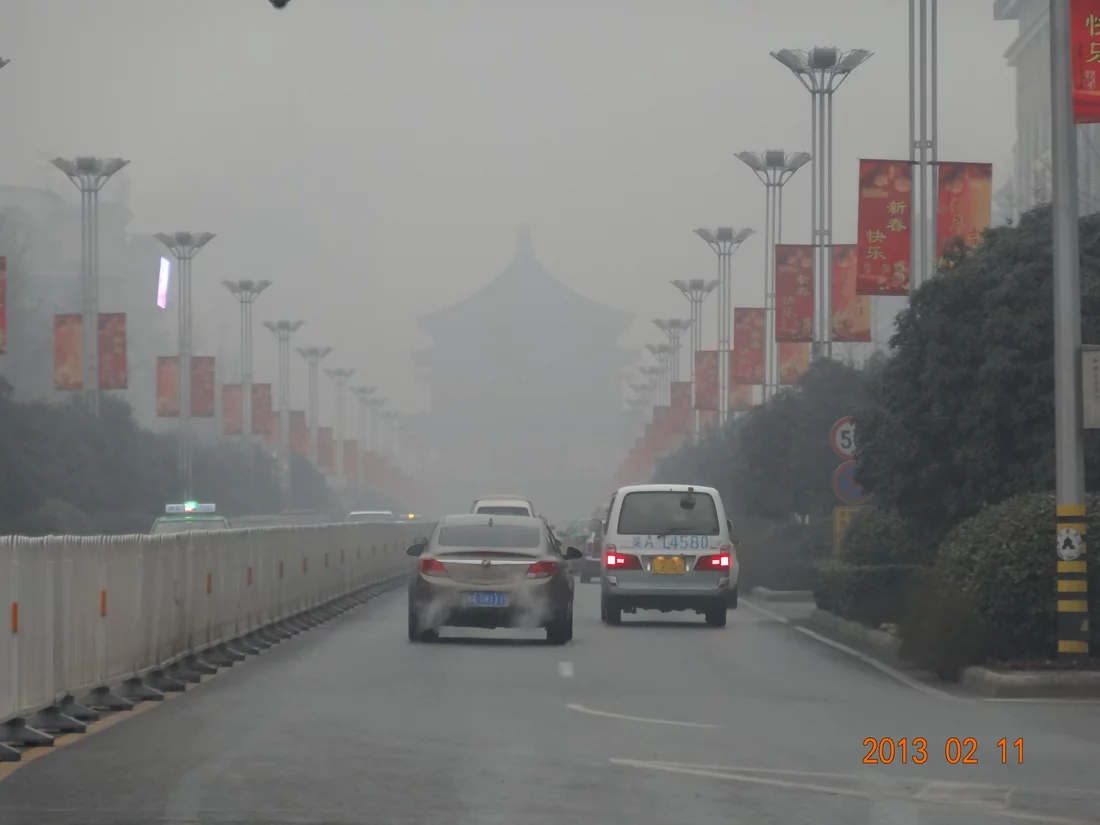The causes of China’s record level fine particulate pollution in winter 2013
At the beginning of 2013 a greyish-brown blanket of smog lay over large areas of China for several months. The fine particle pollution was higher by 1 to 2 orders of magnitude than the levels normally measured in Western Europe and the United States. An international team of researchers under the lead of the Paul Scherrer Institute PSI and the Institute of Earth Environment, Chinese Academy of the Sciences revealed the causes of the airpocalypse. The study published in the journal Nature also describes what steps are to be taken to prevent an environmental crisis of this kind in the future.
In the social media Chinese people quickly came up with dramatic names for this really serious phenomenon which started at the beginning of 2013 and lasted several months. Names like airpocalypse
and airmaggedon
reflected the major concerns of many people about the drastic deterioration in air quality in cities like Beijing, Shanghai, Guangzhou and Xi’an. The Chinese government ordered the temporary closure of schools and called on people to stay indoors. Building sites were sprayed with water to wash off dust. The number of registered patients with acute respiratory disorders increased at breakneck speed. The government was swift to act: in an ambitious plan of action to prevent and monitor air pollution it set itself the goal of reducing fine particle pollution by up to 25 percent by 2017 compared with the 2012 levels.
Major gaps in knowledge about fine particle sources
Effective medium-term and long-term measures to reduce pollution caused by fine particle are hampered by one basic shortcoming in China: a lack of knowledge about where the fine dust comes from. International co-operation under the lead of the researchers from the PSI Laboratory of Atmospheric Chemistry and CAS Institute of Earth Environment has now presented a study which is unique in terms of the scale of detail in China. It identifies the sources and chemical composition of fine particles (PM2.5) during the record level pollution period. The authors outline what fine particle reduction measures would be beneficial in the future.
Indirect emissions are dominant
André Prévôt from the Paul Scherrer Institute formulates the most important finding as follows, If we want to prevent a repeat of 'airmaggedon' then we have to focus more on emissions which indirectly lead to fine particle formation. During the period concerned between half and three-quarters of the fine particle mass in the cities Beijing, Shanghai and Guangzhou was not, in fact, emitted directly as fine particles but formed in the air from gaseous precursors.
In contrast to, for example, soot these trace gases are chemically converted in the atmosphere into fine particle mass. The main fine particle precursors include sulphur dioxide (mainly from fossil fuel combustion), nitrogen oxide (from traffic and power plants), ammonia, and what are known as volatile organic compounds - VOCs (from e.g. the combustion of coal, biomass or fuels in combustion engines). Only in the western Chinese city of Xi’an did the researchers observe a dominant role of direct fine dust emissions which probably come for the most part from the neighbouring desert regions – although the brisk construction work and traffic in the city probably contributed appreciable amounts that shouldn’t be underestimated. Still, even in Xi’an the secondary fine particle mass accounted for 30 percent of the particle pollution.
Colourful regional pattern of sources
The measurements and their statistical analyses confirm that coal combustion in the north (Beijing) and in the west (Xi’an) is very important when it comes to direct emissions. Coal heating within a radius of 1,000 kilometres of these cities is very widespread. Coal combustion releases large amounts of what are known as polycyclic aromatic hydrocarbons (PAHs) and heavy metals like arsenic and lead – pollutants that can have a harmful effect on the cardiovascular system and the respiratory tract. Moreover, in Xi’an the hesitant enforcement of emission provisions for motor vehicles was noticeable. There road traffic pollutes the air far more with fine dust than in other cities although the volume of traffic is much lower in Xi’an. Furthermore, biomass combustion is widespread in winter, particularly from wood and crop residual burning. It contributes similar relative shares in the various cities. For all fine particle sources, transport of air masses from the surrounding region should likewise be considered, particularly in large urban agglomerations. Also in cities fine particle pollution is only partially a homemade
problem.
What is to be done?
From the analysis of their measurement data the authors concluded that, besides direct fine particle emissions, attention should focus more on indirect particle emissions in future measures to combat fine particle pollution in China. The emission of trace gases which can be converted in the air into fine particle mass - like sulphur dioxide, nitrogen oxide and in particular the volatile organic compounds from combustion processes – should be limited to a greater degree. In the case of sulphur dioxide the Chinese government has already chalked up some initial progress. Thanks to the use of desulphurisation technologies in coal-fired power plants, the sulphur-dioxide concentration in the air has decreased since 2006. In the case of nitrogen oxides the measured concentration is, however, still rising. This is due to increased fuel consumption by motor vehicles and power plants coupled with what are, in some cases, still overly lax emission thresholds or a lack of implementation. The authors believe there is an urgent need for action with regard to volatile organic compounds which have mostly been neglected up to now. They are responsible for between 18 and 33 percent of the measured fine particle mass. The emissions of these by-products from combustion processes could be considerably lowered through more efficient coal-fired and wood-fired stoves or stricter emission provisions for motor vehicles.
For their investigations the researchers drew on wide-ranging measurement and analysis methods which are either state-of-the-art or even new developments. For instance, they used an offline aerosol mass spectrometric approach newly developed at PSI to measure the mass spectral fingerprints of organic aerosol in PM2.5, and used a radiocarbon method developed by the University of Bern to distinguish between fossil and non-fossil carbon. What’s more, these methodologies significantly benefit from the extensive use and the low cost of filter sampling. Therefore, similar measurement campaigns could also be conducted in other developing or newly industrialised countries facing comparable situations with regard to fine particle pollution.
Text: Paul Scherrer Institute/Leonid Leiva
About PSI
The Paul Scherrer Institute PSI develops, builds and operates large, complex research facilities and makes them available to the national and international research community. The institute's own key research priorities are in the fields of matter and materials, energy and environment and human health. PSI is committed to the training of future generations. Therefore about one quarter of our staff are post-docs, post-graduates or apprentices. Altogether PSI employs 1900 people, thus being the largest research institute in Switzerland. The annual budget amounts to approximately CHF 350 million.
Additional information
Laboratory of Atmospheric Chemistry: http://www.psi.ch/lac
Contact
Dr. André Prévôt, Laboratory of Atmospheric Chemistry,
Paul Scherrer Institut, 5232 Villigen PSI
Telephone: +41 56 310 4202, Mobil: +41 79 561 89 50, E-mail: andre.prevot@psi.ch
Original Publication
'High secondary aerosol contribution to particulate pollution during haze events in China'
Ru-Jin Huang, Yanlin Zhang, Carlo Bozzetti, Kin-Fai Ho, Jun-Ji Cao, Yongming Han, Kaspar R. Dällenbach,
Jay G. Slowik, Stephen M. Platt, Francesco Canonaco, Peter Zotter, RobertWolf, Simone M. Pieber, Emily A. Bruns,
Monica Crippa, Giancarlo Ciarelli, Andrea Piazzalunga, Margit Schwikowski, Gülcin Abbaszade, Jürgen Schnelle-Kreis,
Ralf Zimmermann, Zhisheng An, Sönke Szidat, Urs Baltensperger, Imad El Haddad & André S. H. Prévôt
DOI: 10.1038/nature13774


